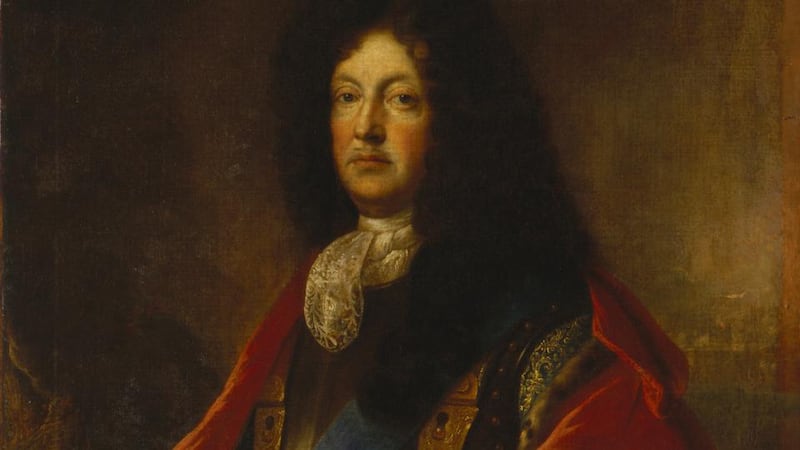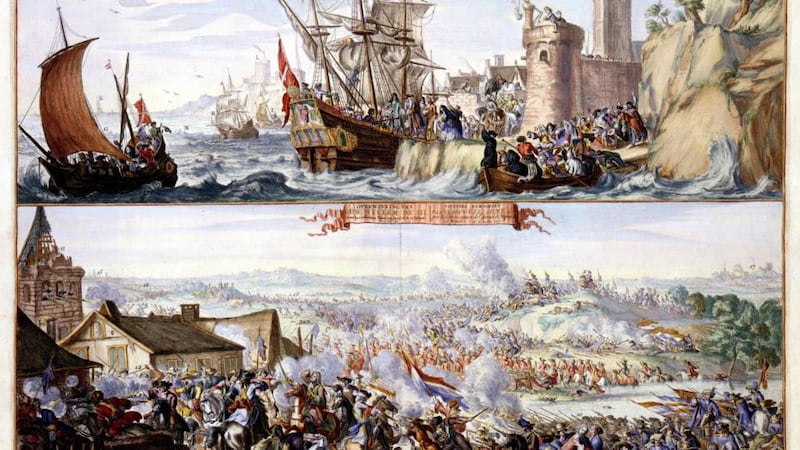I first met Richard Talbot (1631-91), so to speak, more than 10 years ago when writing a book on the Battle of the Boyne. As Earl of Tyrconnell (a Palesman, he had no connection whatsoever with Donegal) he led the Irish in the heaviest fighting that day. While I still write military history, I have since then written a general survey, Consolidating Conquest: Ireland 1603-1727, in which Talbot loomed large.
I was intrigued that the British tradition of history-writing heaped such contempt on Talbot. This "Whig" history projected onto the past an irresistible thrust towards parliamentary democracy in which the "Glorious Revolution" (in reality a backstairs intrigue and Dutch invasion) of 1688 ousted James II, "popery" and arbitrary government. Those who stood in the way of history's tide like Tyrconnell were either fools or knaves. That is why Macaulay's enormously popular, Victorian-era History of England endows Talbot with so many (contradictory) vices; he was at once a foul-mouthed thug, brazen liar, childish braggart, shameless pimp and "a cold hearted, farsighted, scheming sycophant".
As late as 1958 JP Kenyon opined of this “bogtrotter” that he spoke for the “rapacious, ignorant, anarchic forces of Irish Catholicism, at the lowest stage of civilisation in western Europe”. Academics nowadays are more nuanced. John Miller and James McGuire depict Tyrconnell pursuing a realistic and attainable plan in the 1680s to wrest and keep Dublin Castle from Protestant control. Even Tyrconnell’s admitted faults like brazen lying, bad-tempered abuse and sly insinuation often proved useful in soothing his master’s fears and discrediting court rivals. Still, the legacy of Macaulay in popular history is harder to shift.


Abused in British historiography, Tyrconnell is neglected in Irish memory. Nineteenth-century historians given to heroic myth-making chose not to elevate him to the Irish nationalist pantheon, shoulder to shoulder with, say, Patrick Sarsfield who was of much less consequence by objective standards. They neglected him partly because his character did not always seem to lend itself to mythologising. A disgruntled secretary and fellow Irishman, for instance, thought him “…a cunning dissembling courtier, of mean judgement and small understanding...”.
In other respects, too, he doesn’t fit comfortably into a teleological nationalist narrative. He was more of a British than an Irish Jacobite. To take just one example: when William of Orange’s invasion loomed, Tyrconnell embarked almost half of his standing army to support James, even though this ran the danger of losing Ireland. Clearly, he did not envisage Ireland standing alone for very long if Britain fell. His gloom and paralysis in the weeks after William’s landing in England is explicable when events are viewed, as Tyrconnell saw them, through a three-kingdom prism.
I also yearned to write Dick Talbot’s story because it is so dramatic. As a callow youth, he survived the annihilation of an Irish army at Dungan’s Hill (1647) and the sack of Drogheda (1649). A few years later he tried and failed to assassinate Oliver Cromwell, was captured and interrogated by his target, and escaped in circumstances which aroused Royalist suspicions of double-dealing. One can almost imagine a cinema screenplay.
For anyone attracted by the sordid glamour of Charles II’s court, Talbot’s life is a point of entry. Dick Talbot had most of the qualities of a quintessential client-courtier. Even his vices (gambling, duelling and sexual intrigue) were courtly and both his wives had been ladies-in-waiting. “Fighting Dick” was one of the three most common insults (the others being “Lying Dick” and “Mad Dick”) heaped on Talbot: it signposts his key character traits of combativeness and resilience.
This is also the story of an almost lifelong friendship. When young Dick Talbot elbowed his way into the little court of the exiled James Duke of York in 1657 he began the relationship that would structure his entire life and career. He thrived on the credit accruing to him by his privileged access to the heir-apparent. He also befriended those who had the ear of the king or who shared his bed and with their help he enriched himself (and them) by perjury, bribery and insider dealing in forfeited Irish estates.
Talbot could have lived uneventfully and comfortably but he was driven (and that is not too strong a word) to use his high connections to redress a communal and national grievance by blocking, subverting, or unravelling Cromwell’s punitive land confiscations and thereby restoring Irish Catholics to their rightful place in their own country.
The mid-1660s marks the moment when, an admirer gushed, he grew into a “defender of his people”. This brought him unwonted prominence as when he would narrowly escape a show trial and execution during the Popish Plot hysteria in 1679. It also brought him triumph and the governorship of Ireland at a critical juncture.
It is simplistic to assume James’s regime was a bizarre aberration that was bound to collapse sooner rather than later. So long as Tyrconnell held most of Ireland for James, William’s invasion of Britain could have been reversed, at least until the Boyne finally closed off that chance. Thereafter, a French protectorate owing nominal allegiance to the Stuarts might have secured the position of Irish Catholics. In other words, Tyrconnell’s failure was not foredoomed.
He intrigued to the end. He deftly shifted the blame for defeat at Aughrim onto Sarsfield’s supporters and reasserted his authority at Limerick by demanding that the officers swear a collective oath to stick together. A united army could extract significantly more concessions from war-weary Williamites than despondent individuals. Tyrconnell did not live to conduct those negotiations, but had he lived he might have done better than Sarsfield. He could hardly have done worse.
Padraig Lenihan is the author of The Last Cavalier: Richard Talbot (1631-91) (UCD Press, €40). He lectures in history at NUI Galway and his writings include Confederate Catholics at War 1642-49 (Cork, 2001), (ed.) Conquest and Resistance: Irish Warfare in the Seventeenth Century (Brill and Leiden, 2001) Battle of the Boyne 1690 (Stroud, 2003), Consolidating Conquest: Ireland 1603-1730 (London, 2007), The Age of Atrocity (Dublin, 2007) co-edited with David Edwards and Clodagh Tait.










